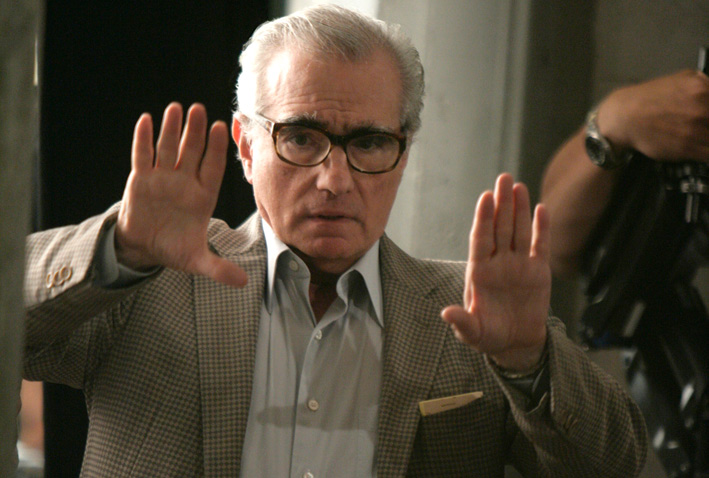Martin Scorsese has announced a brand-new 38-film curriculum, “Portraits of America: Democracy on Film,” the latest addition to the ongoing film course “The Story of Movies“, presented by Scorsese and his nonprofit organization The Film Foundation. Both film courses, offered free to schools and universities, aim to introduce students to classic cinema and the cultural, historical and artistic significance of film.
“We all need to make sense of what we’re seeing. For young people born into this world now, it’s absolutely crucial that they get guided. They have to learn how to sort the differences between art and pure commerce, between cinema and content, between the secrets of images that are individually crafted and the secrets of images that are mass-produced. We want to teach our students to try and be critical thinkers, and now we have to teach them to be critical viewers as well.” – Martin Scorsese (via Indiewire)

If you’d like to follow along, the full curriculum is listed below but this is not the first time Scorsese has played the role of professor. As a teacher of New York University’s Sight & Sound class, where his own student films are considered required viewing for incoming freshmen, he taught future auteurs Spike Lee and Oliver Stone, screening everything from Sam Fuller’s Shock Corridor to the Marx Brothers, and often engaged in extracurricular screenings that led to his own course strictly devoted to contemporary American film (via Leonard Martin / Memories of Professor Scorsese). In partnership with the British Film Institute, he released “A Personal Journey with Martin Scorsese Through American Movies,” a nearly 4 hour documentary released in 1995. Originally airing on Channel 4 in the UK, the documentary was structured in three segments, focusing on what he labeled as four types of directors: the storyteller, the illusionist (D.W. Griffith or F.W. Murnau, who created new editing techniques and other innovations that made sound and color possible for filmmakers that followed), the smugger (Douglas Sirk or Samuel Fuller, who used to hide subversive messages and themes in their films), and the iconoclast (Charles Chaplin, Orson Welles, Sam Peckinpah or Stanley Kubrick, who attacked social conventionalism).
This new curriculum covers many notable films released after the 1995 documentary, so if you’ve already gone through his “Personal Journey” and explored the ongoing World Cinema Project series from The Criterion Collection, you can keep discovering new films while you wait for the release of his upcoming Masterclass (Martin Scorsese Teaches Filmmaking).
Module 1: The Immigrant Experience
Introductory Lesson: From Penny Claptrap to Movie Palaces—the First Three Decades
Chapter 1: “The Immigrant” (1917, d. Charlie Chaplin)
Chapter 2: “The Godfather, Part II” (1974, d. Francis Ford Coppola)
Chapter 3: “America, America” (1963, d. Elia Kazan)
Chapter 4: “El Norte” (1983, d. Gregory Nava)
Chapter 5: “The Namesake” (2006, d. Mira Nair)
Module 2: The American Laborer
Introductory Lesson: The Common Good
Chapter 1: “Black Fury” (1935, d. Michael Curtiz)
Chapter 2: “Harlan County U.S.A.” (1976, d. Barbara Kopple)
Chapter 3: “At the River I Stand” (1993, d. David Appleby, Allison Graham and Steven Ross)
Chapter 4: “Salt of the Earth” (1954, d. Herbert J. Biberman)
Chapter 5: “Norma Rae” (1979, d. Martin Ritt)
Module 3: Civil Rights
Introductory Lesson: The Camera as Witness
Chapter 1: King: A Filmed Record…Montgomery to Memphis (1970, conceived & created by
Ely Landau; guest appearances filmed by Sidney Lumet and Joseph L. Mankiewicz)
Chapter 2: “Intruder in the Dust” (1949, d. Clarence Brown)
Chapter 3: “The Times of Harvey Milk” (1984, d. Robert Epstein)
Chapter 4: “Smoke Signals” (1998, d. Chris Eyre)
Module 4: The American Woman
Introductory Lesson: Waysof Seeing Women
Chapter 1: Through a Woman’s Lens: Directors Lois Weber (focusing on “Suspense,” 1913
and “Where Are My Children,” 1916) and Dorothy Arzner (“Dance, Girl, Dance,” 1940)
Chapter 2: “Imitation of Life” (1934, d. John M. Stahl)
Chapter 3: “Woman of the Year” (1942, d. George Stevens)
Chapter 4: “Alien” (1979, d. Ridley Scott)
Chapter 5: “The Age of Innocence” (1993, d. Martin Scorsese)
Module 5: Politicians and Demagogues
Introductory Lesson: Checks and Balances
Chapter 1: “Gabriel Over the White House” (1933, d. Gregory La Cava)
Chapter 2: “A Lion is in the Streets” (1953, d. Raoul Walsh)
Chapter 3: “Advise and Consent” (1962, d. Otto Preminger)
Chapter 4: “A Face in the Crowd” (1957, d. Elia Kazan)
Module 6: Soldiers and Patriots
Introductory Lesson: Movies and Homefront Morale
Chapter 1: “Sergeant York (1941, d. Howard Hawks)
Chapter 2: Private Snafu’s Private War—three Snafu Shorts from WWII
Chapter 3: “Three Came Home” (1950, d. Jean Negulesco)
Chapter 4: “Glory” (1989, Edward Zwick)
Chapter 5: “Saving Private Ryan” (1998, d. Steven Spielberg)
Module 7: The Press
Introductory Lesson: Degrees of Truth
Chapter 1: “Meet John Doe” (1941, d. Frank Capra)
Chapter 2: “All the President’s Men” (1976, d. Alan J. Pakula)
Chapter 3: “Good Night, and Good Luck” (2005, d. George Clooney)
Chapter 4: “An Inconvenient Truth” (2006, d. Davis Guggenheim)
Chapter 5: “Ace in the Hole” (1951, d. Billy Wilder)
Module 8: The Auteurs
Introductory Lesson: Film as an Art Form
Chapter 1: “Modern Times” (1936, Charlie Chaplin)
Chapter 2: “The Grapes of Wrath”(1940, d. John Ford)
Chapter 3: “Citizen Kane” (1941, d. Orson Welles)
Chapter 4: “An American in Paris” (1951, d. Vincente Minnelli)
Chapter 5: “The Aviator” (2004, d. Martin Scorsese)

